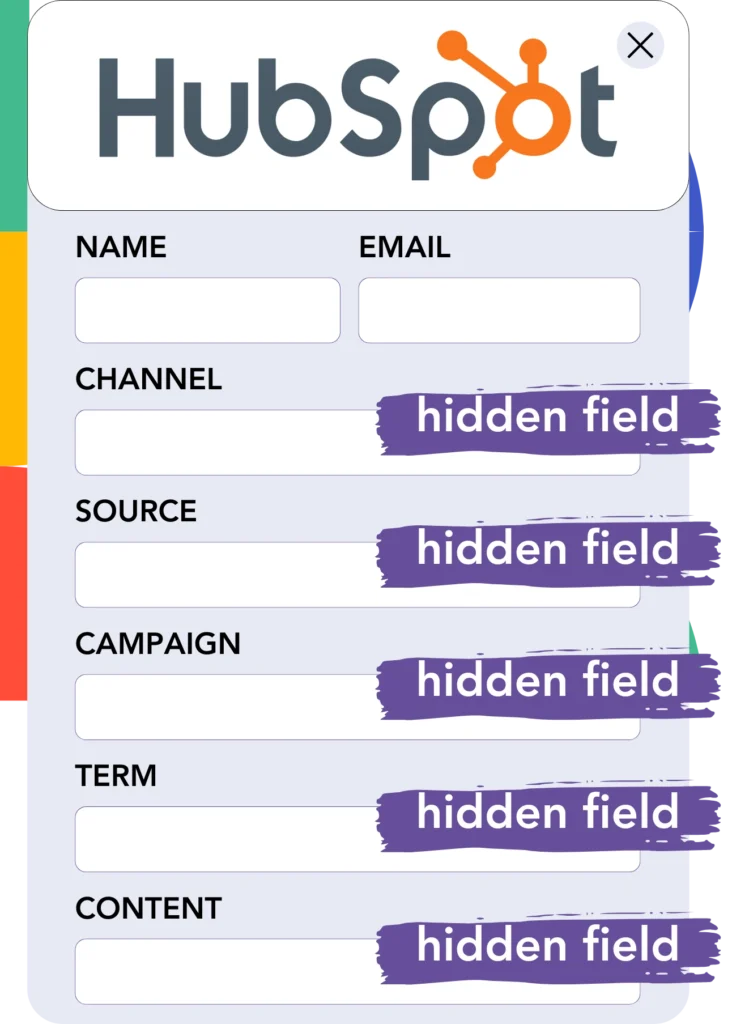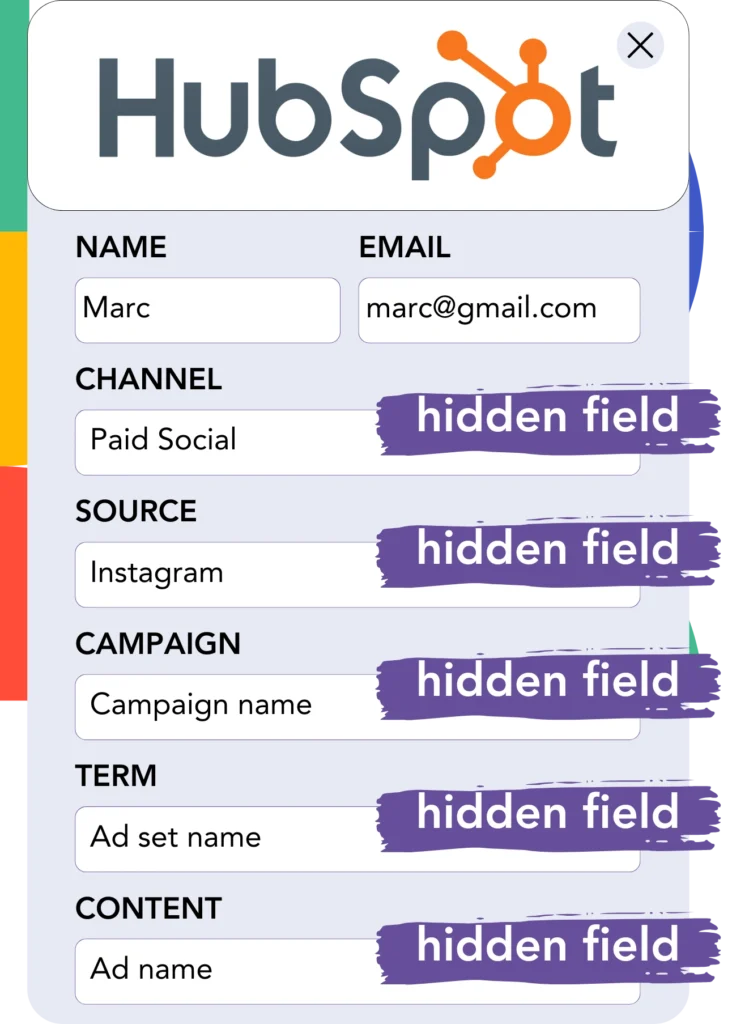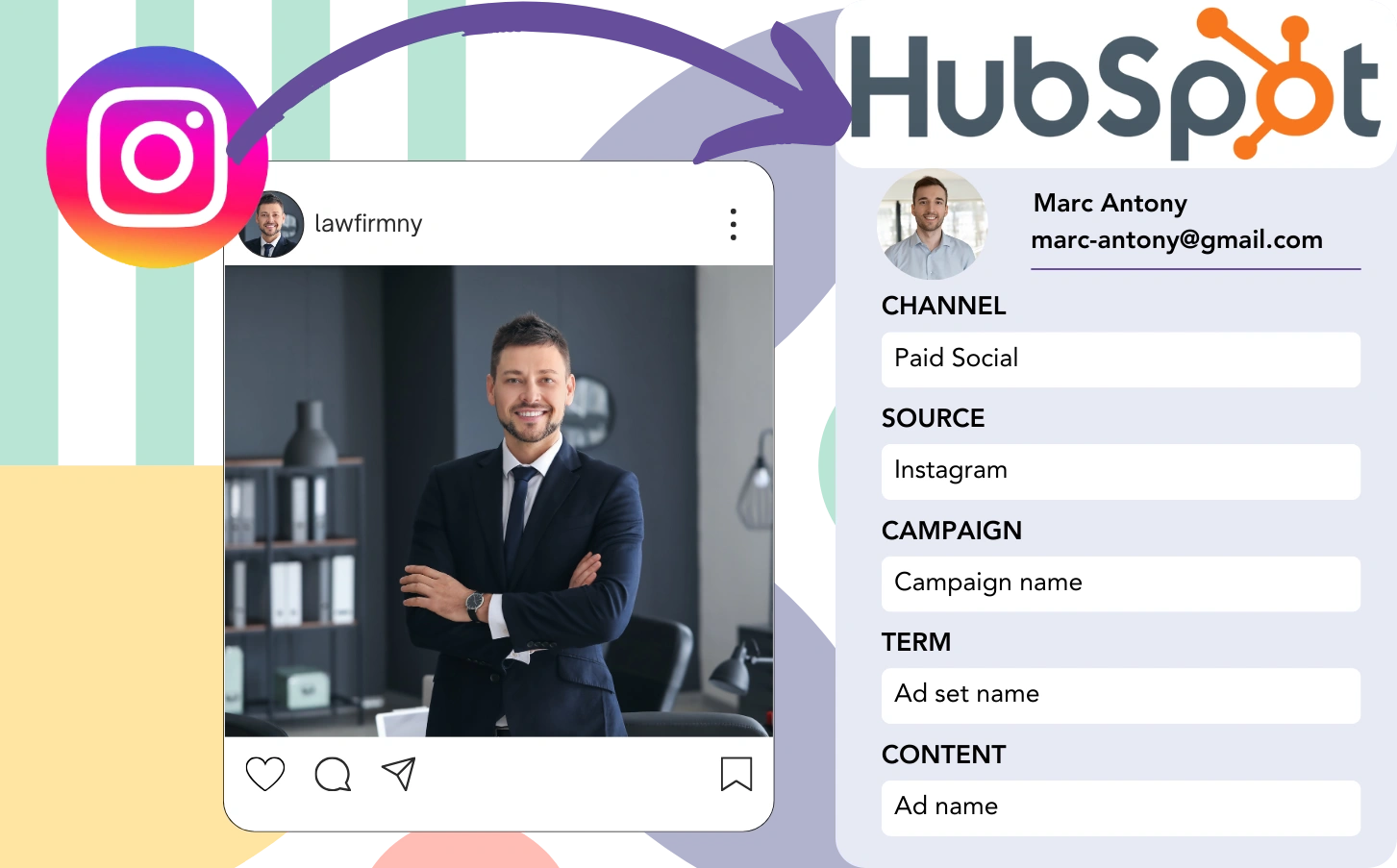While HubSpot Forms helps you gather Instagram leads, it doesn’t connect each one to a specific ad. Likewise, when a lead becomes a customer, it’s impossible to identify which Instagram ad they came from.
Without tracking, it’s nearly impossible to determine how well your Instagram ads perform, so you don’t know which ads attract leads and customers. This means you’re investing in different ads without knowing which convert effectively.
Fortunately, there’s a clear method to tie each lead back to the Instagram campaign, ad set, and specific ad that generated it.
We’ll go over each part step by step!
How to track Instagram ads in HubSpot Forms
Step 1: Add Leadsources in the head tag of your website

Leadsources is a tool designed to track where leads come from. Once on your site, it collects up to 7 data points for each lead’s source.
➡️ Sign up to Leadsources.io for free
➡️ Add the Leadsources tracking code to your site
Step 2: Add the UTM parameters to your Instagram ads

Insert UTM parameters in your ad URL to gather data on Instagram ads, including campaign, ad set, and specific ad. Here’s an example setup:
UTM_medium=paidsocialUTM_source=instagramUTM_campaign=campaign-nameUTM_term=ad-set-nameUTM_content=ad-name
The final URL will look like this:
https://www.yourdomain.com?UTM_medium=paidsocial&UTM_source=instagram&UTM_campaign=campaign-name&UTM_term=ad-set-name&UTM_content=ad-nameImportant: Leadsources ensures full tracking by gathering all lead source data, even without UTM parameters.
Step 3: Add the hidden fields in HubSpot Forms

Hidden fields are form fields that users can’t see, yet they hold information that’s submitted with the form.
When someone submits your HubSpot Forms, Leadsources automatically updates the hidden fields with the corresponding Instagram ads data. This data is saved directly in your HubSpot Forms.
Step 4: Capture the Instagram ads data in HubSpot Forms

When users interact with your ads and access your site, Leadsources fetches the Instagram campaign, ad set, ad information, and more.
Leadsources easily populates the hidden fields in HubSpot Forms with Instagram ads information.
Consequently, after the form is submitted, you can find the Instagram ad data and lead details waiting for you in HubSpot Forms.
How does Leadsources work?
Whenever a user arrives at your site, Leadsources fetches Instagram ad data and populates it in the hidden fields of your form. Upon form submission, this data, including lead details like name and email, is transmitted to HubSpot Forms.
Leadsources details all of this source data for each lead:
| Lead source data | Fetched automatically |
| Channel | ✅ |
| Source | ✅ |
| Campaign | ✅ OR use UTM_campaign |
| Content | UTM_content parameter is required |
| Term | UTM_term parameter is required |
| Landing page | ✅ |
| Landing page subfolder | ✅ |
As outlined in the table above, when UTM parameters cannot be implemented—such as with organic sources like Google search or referral traffic—Leadsources still gathers some lead source data:
- Channel
- Source
- Campaign
- Landing page
- Landing page subfolder
Unlike other analytics tools, Leadsources tracks lead sources from all marketing channels, both organic and paid.
Performance reports: Lead, sales, and revenue by source
By including Instagram ad data in HubSpot Forms, you can create performance reports that summarize:
- Leads, sales, and revenue by channel
- Leads, sales, and revenue by source
- Leads, sales, and revenue by campaign (aka. Instagram campaign)
- Leads, sales, and revenue by term (aka. Instagram ad set)
- Leads, sales, and revenue by content (aka. Instagram ad)
This enables you to readjust your Instagram budget according to the campaigns, ad sets, and ads that gather the most leads, sales, and revenue.
Let’s look some of the reports available for you to generate:
1. Lead source reports
Generate performance reports that capture the quantity of leads produced by:
- Channel
- Source
- Campaign (aka. Instagram campaign)
- Term (aka. Instagram ad set)
- Content (aka. Instagram ad)
- Landing page
- Landing page subfolder
Example #1: Leads by channel
This report helps to clarify which channel is most successful in lead generation.

Example #2: Leads by Instagram campaign
You can now emphasize on a specific lead source (e.g., Instagram) and measure the number of leads produced by various Instagram campaigns.

Example #3: Leads by Instagram ad
After determining the Instagram campaign that results in the most leads, you can investigate which specific ad set or ad is attracting those leads.

2. Sales and revenue source reports
Having identified the Instagram campaign, ad set, and ad responsible for our leads, we should analyze whether these leads are converting into sales and revenue.
To accomplish this aim, connect your leads to a CRM such as GoHighLevel. This enables tracking of sales and revenue across multiple channels, sources, Instagram campaigns, ad sets, ads, landing pages, and landing page subfolders.
With these insights in mind, you can enhance your Instagram ad strategy to focus on the channels, sources, campaigns, ad sets, and ads that generate significant sales and revenue.
You can establish a range of sales and revenue reports, such as:
- Sales and revenue by channel
- Sales and revenue by source
- Sales and revenue by campaign
- Sales and revenue by term (e.g., Instagram ad set)
- Sales and revenue by content (e.g., Instagram ad)
- Sales and revenue by landing page
- Sales and revenue by landing page subfolder
Example Scenario:
| Channel | Search Paid | Social Paid |
|---|---|---|
| Leads | 50 | 75 |
| Sales | 5 | 6 |
| Average Order Value | $150 | $100 |
| Revenue | $750 | $600 |
Following the launch of ads on Google and Instagram, the initial “Leads by Channel” report revealed that Social Paid ads (Instagram) attracted more leads than Search Paid ads.
However, after reviewing the sales and revenue trends in your CRM, you realized that the Search Paid channel generated a higher revenue with fewer leads compared to the Social Paid channel. As a result, you adjusted your budget to increase investment in the Search Paid channel.
LeadSources tracks the source of each lead in HubSpot Forms, whether they come from ads, organic search, social, email, etc. and syncs that data with each submission. See the full breakdown on the lead source in HubSpot Forms page.

